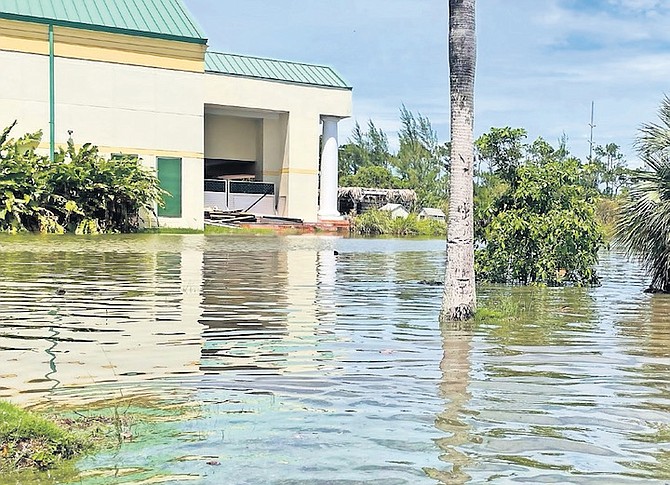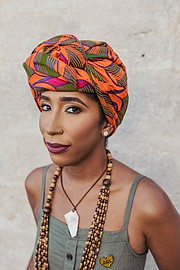YEAR after year, the rainy seasons meets us unprepared. There are inches of rain, roads flood, cars damaged and some people have difficulty leaving their homes. School drop-offs and the drive to work take much longer as traffic seems to crawl. Drivers move slowly through the water and try to control for the inevitable drops into holes that are only getting wider, deeper and more treacherous. People frantically switch from one radio station to another, listening for school closure notices and refresh emails hoping for notification that their places of work are closed or, at the very least, opening later in the day.
It is like a new experience every time. Somehow, though, we are supposed to be preparing — or already prepared — for hurricane season.
In studies and discussion on climate change, there is significant focus on two key strategies — mitigation and adaptation. Climate change mitigation refers to efforts that reduce or prevent the emission of greenhouse gases (GHG). These may include adoption of renewable energy such as solar and hydro, using more sustainable transportation methods such as robust and affordable public transportation services and electric vehicles, and better use of land. We can think of mitigation as risk reduction.
Adaptation refers to efforts, both reactive and anticipatory, to reduce the negative impact of climate change. It is preparation and adjustment, recognizing that, even with our interventions, there are effects of climate changes that require a response. Mitigation and adaptation strategies are complementary and require legislation, policies, programmes and services to implement, encourage, enforce and put them into practice.
In recent weeks, there have been several new stories focused on environmental degradation and, more specifically, the destruction of ecosystem-based adaptation, including mangroves and pine forests. This has had a negative effect, increasing flooding in many areas. We are not imagining the increase in flooding, or the increase in damage caused by rainfall. It is happening before our eyes, and our response needs to at least be commensurate with the impact.
Small island developing states (SIDS) are disproportionately impacted by climate change. We get the brunt of it through climate events such as hurricanes, and we are seeing now that our vulnerability is not even limited to hurricanes. While Ministers and advocates travel to large conferences to call for climate reparations, development assistance, commitments to lower emissions (and follow-through), there is work to be done at home.
We have to protect the environment that helps to protect us. We have to secure and insure our homes, make repairs, monitor changes in structures and infrastructure around us, and think about job security, food security and evacuation plans.
There is always talk about climate resilience. The Centre for Climate and Energy Solutions, successor to the Pew Centre on Global Climate Change says: “Climate resilience is often associated with acute events — like heat waves, heavy downpours, hurricanes, or wildfires — that will become more frequent or intense as the climate changes. However, good resilience planning also accounts for chronic events, like rising sea levels, worsening air quality, and population migration.”
Climate resilience requires mitigation and adaptation measures, and the most impacted sectors, including agriculture, and people, including women, people in rural areas, and people with disabilities, to be centred and engaged.
It often seems that we, as individuals, are expected to take responsibility for our own resilience. We have to mitigate and adapt for ourselves and our households. If we have to get to work, sunshine, rain, or severe flooding, public transportation and low-cost vehicles are less of an option. We all need a “high off the ground” vehicle which, in many cases, have larger tanks, requiring more gas. This personal decision comes at a financial and environmental cost. If homeowners want to protect their houses, they need to get insurance, and they had better read all of the fine print and figure out what they need to add to the basic plan to ensure they are covered should there be damage by hurricane or flood. They have to be able to afford insurance and keep up with the payments to have this protection. Again, we are responsible for our own resilience - and resilience costs money.
Who can afford climate resilience? Picture that person. What is their salary? What is the difference between that salary and the salary of a person being paid minimum wage? How is the minimum wage worker going to build (buy) resilience? The rising cost of living, minimum wage, and lack of government and institutional support, from legislation and policy to programmes and services, do not add up to climate resilience. The living wage needs to be implemented immediately. Community-level climate resilience initiatives and national mechanisms — to support people who do not receive enough money to pay for any level of personal climate resilience — are needed now.
We do not have to wait for a hurricane to see how many people are barely getting by. We do not need to be in the midst of disaster to understand the importance of mitigation and adaptation. We do not need to see long lines of people at distribution sites to know most of the people in The Bahamas cannot prepare, nor can they recover. We do not need an academic study to prove there are some groups of people who have less, so they need more support.
The current administration increased its travel budget by $4.1m. The Prime Minister said the government does not know what travel will come up this year. He noted it is a budgeted amount that may not be used. We do know that climate change is here. We know there will be more hurricanes, there will be more devastation and there will be more cries for help.
We know that everyone will not be able to prepare in the same way for their health and wellbeing. If Ministers are travelling to talk about issues of national concern, at least the same amount of money should be spent addressing those issues here in The Bahamas, providing resources to researchers, experts and community organizations in addition to funding government initiatives that meet the needs of the people.
Climate change is not an individual problem and we will not be able to address it with neoliberal approaches. Climate events are happening at various levels, and we cannot afford to simply hope everyone has the money they need to survive, and then recover. We need better, more responsive budgets, stronger systems, and people-centred approaches in climate action.
Recommendations
1. Actress Franchesca Ramsey’s Bold DIY Rental Boasts Nearly Every Colour of the Rainbow. In this Apartment Therapy feature by Marisa Vitale, there is a great slideshow highlighting the fun, bright choices Franschesca made to create a cheerful space for herself in a middies 898 square foot Los Angeles apartment which she jokingly calls a “selfie emporium.” She describes her style as “colourful, eclectic, gold, patterned, glowing.” She said: “I think of myself as ‘budget bouge’ meaning I enjoy nice things, but I’m always looking for a bargain.” If you are interested in her inspired wall designs, find Franchesca on social media to the video clips of her painting process.
2. Legendary. It is not perfect or comprehensive, by any means, but you can scratch the surface of ballroom culture when you tune in to this entertaining competition between houses bringing their best duckwalks, hand performances, faces, and drops with the hopes of winning $100,000. Each week, the houses perform at a themed function where they must tell a story while demonstrating their dance and athletic skills. The two houses with the lowest scores must battle to stay, and one gets sent home while the other can compete at the next function. Judges Law Roach, Leoimy Maldnado, and Jameela Jamil are joined by another judge, and sometimes an additional guest judge, each season. Legendary is now in its third season, but starting at Season one is a good idea. It’s Pride month, so it’s a great time to learn more about a LGBTQI+ subculture and the way the members of the community choose, create, and nourishes families. If you enjoyed Pose or Paris is Burning, you’ll probably enjoy Legendary.






Comments
JokeyJack 1 year, 10 months ago
Cool, now government has a brand new excuse not to fix the flooding on Bay Street and Pinewood that's been going on for decades. Climate change ... LOL
Sign in to comment
Or login with:
OpenID